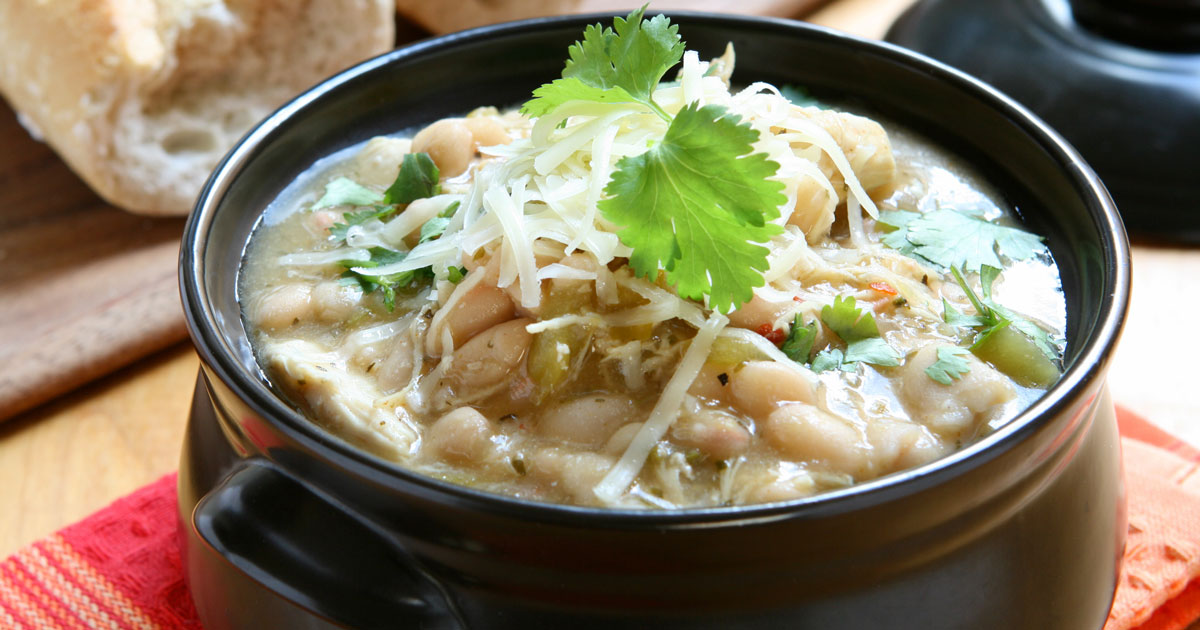Ingredients:
2 cups navy beans, dry
1 large onion, chopped
2 stalks of celery and leaves, chopped
2 1/2 teaspoons salt (may be reduced)
1/4 teaspoon savory
1/4 teaspoon marjoram
1 bay leaf
A small amount of cold-pressed, virgin olive oil (to sauté onions).
Directions:
Soak beans overnight and rinse.
Cover beans well with water and cook until tender (3 hours).
Sauté onions in oil (or water).
Add onions and the rest of ingredients to beans. Some people add the salt after the beans are soft.
Optional: You may add 2 tablespoons soy flour or unbleached white flour dissolved in 1/2 cup water if you want a thicker soup.
Cook until legumes are very tender and thickened somewhat.
Potential Health Benefits from Our Recipe:
Our recipe today features navy beans, celery, and onions. As you will see this soup has the potential of helping type 2 diabetes, pre-diabetes, and obesity especially when other helpful lifestyle practices are followed.
Navy beans are rich in the good resistant-starch carbs and provide a good amount of protein too. They also offer ample amounts of folate, phosphorous, iron, magnesium, and vitamin B1. Low thiamine levels are often seen in individuals who have diabetes.1 Legumes are rich in soluble fiber that helps to reduce elevated cholesterol and blood sugar levels. These ordinary-looking beans have the trace mineral manganese which is essential for many antioxidant enzymes. Eating legumes improves our ability to control appetite and weight management.2,3 Magnesium improves the ability of the cells to respond to insulin.
Celery has over a dozen anti-inflammatory compounds and vitamin K. (Inflammation fuels diabetes and other chronic conditions.) When used liberally and regularly, celery may help reduce elevated blood pressure and blood lipids (cholesterol and triglycerides).4,5,6 Celery is a good source of several cancer-fighting phytochemicals.
Onions have phytonutrients that help to reduce elevated cholesterol levels as well as anti-inflammatory, anti-diabetes, and cancer-preventive compounds, and possess possible blood-thinning activities.7
Sources
- www.ncbi.nlm.nih.gov/pmc/articles/PMC3376872/[↩]
- Kim SJ. Effects of dietary pulse consumption on body weight: a systematic review and meta-analysis of randomized controlled trials. Am J Clin Nutr.2016 May; 103(5):1213-23. [↩]
- McCrory MA. Pulse Consumption, Satiety, and Weight Management. Adv Nutr. 2010 Nov; 1(1): 17–30.[↩]
- Tsi D. Effects of aqueous celery (Apium graveolens) extract on lipid parameters of rats fed a high fat diet. Planta Med. 1995 Feb; 61(1):18-21.[↩]
- Dianat M. The effect of hydro-alcoholic celery (Apiumgraveolens) leaf extract on cardiovascular parameters and lipid profile in animal model of hypertension induced by fructose. Avicenna J Phytomed. 2015 May-Jun; 5(3):203-9.[↩]
- Moghadam MH. Antihypertensive effect of celery seed on rat blood pressure in chronic administration. J Med Food. 2013 Jun;16(6):558-63.[↩]
- https://www.livescience.com/45293-onion-nutrition.html[↩]

